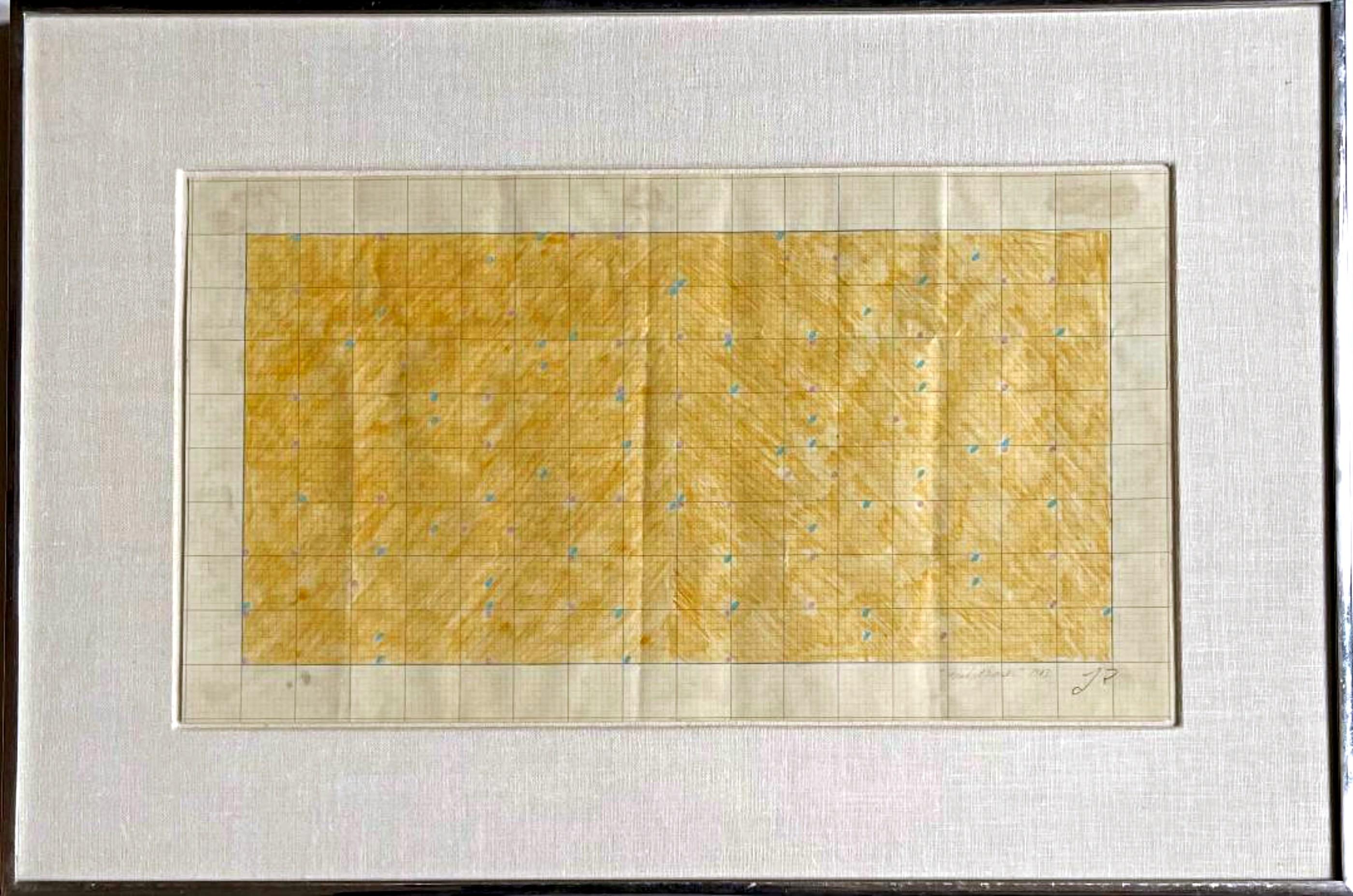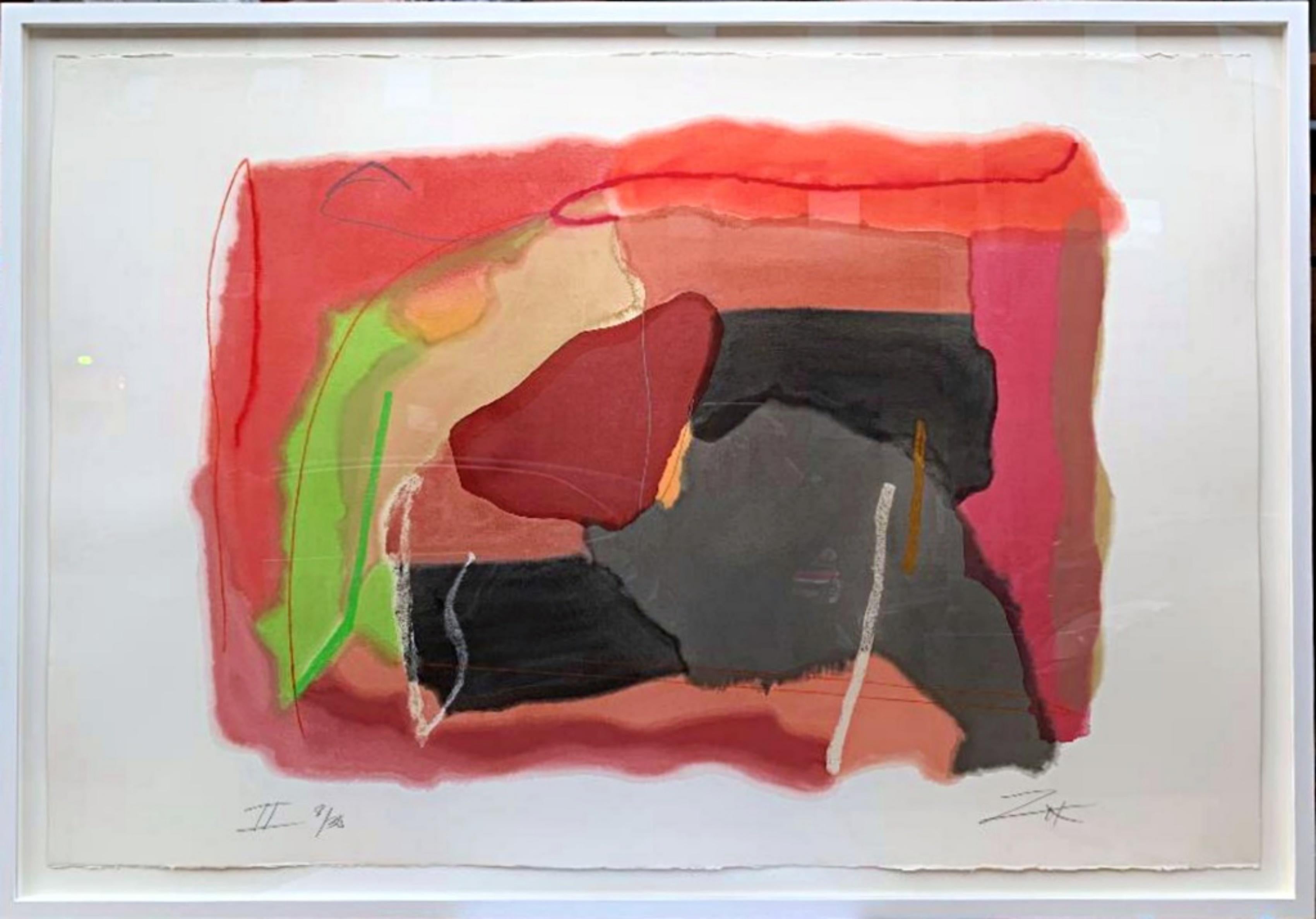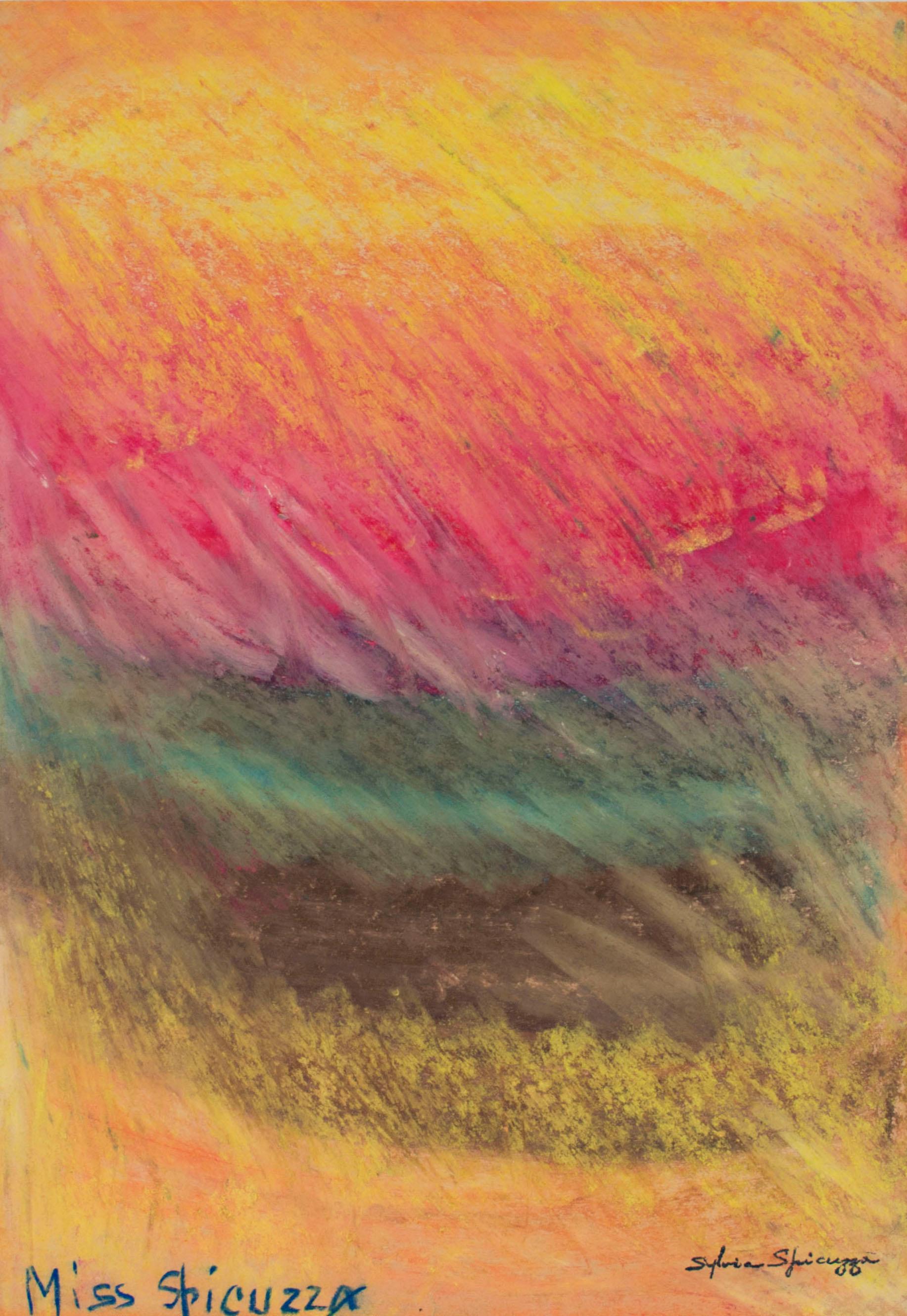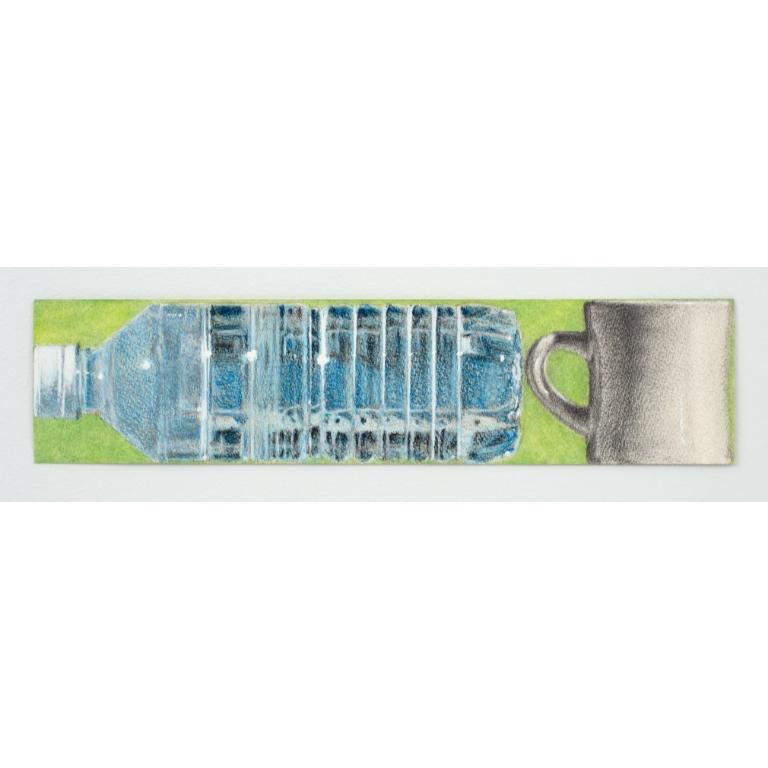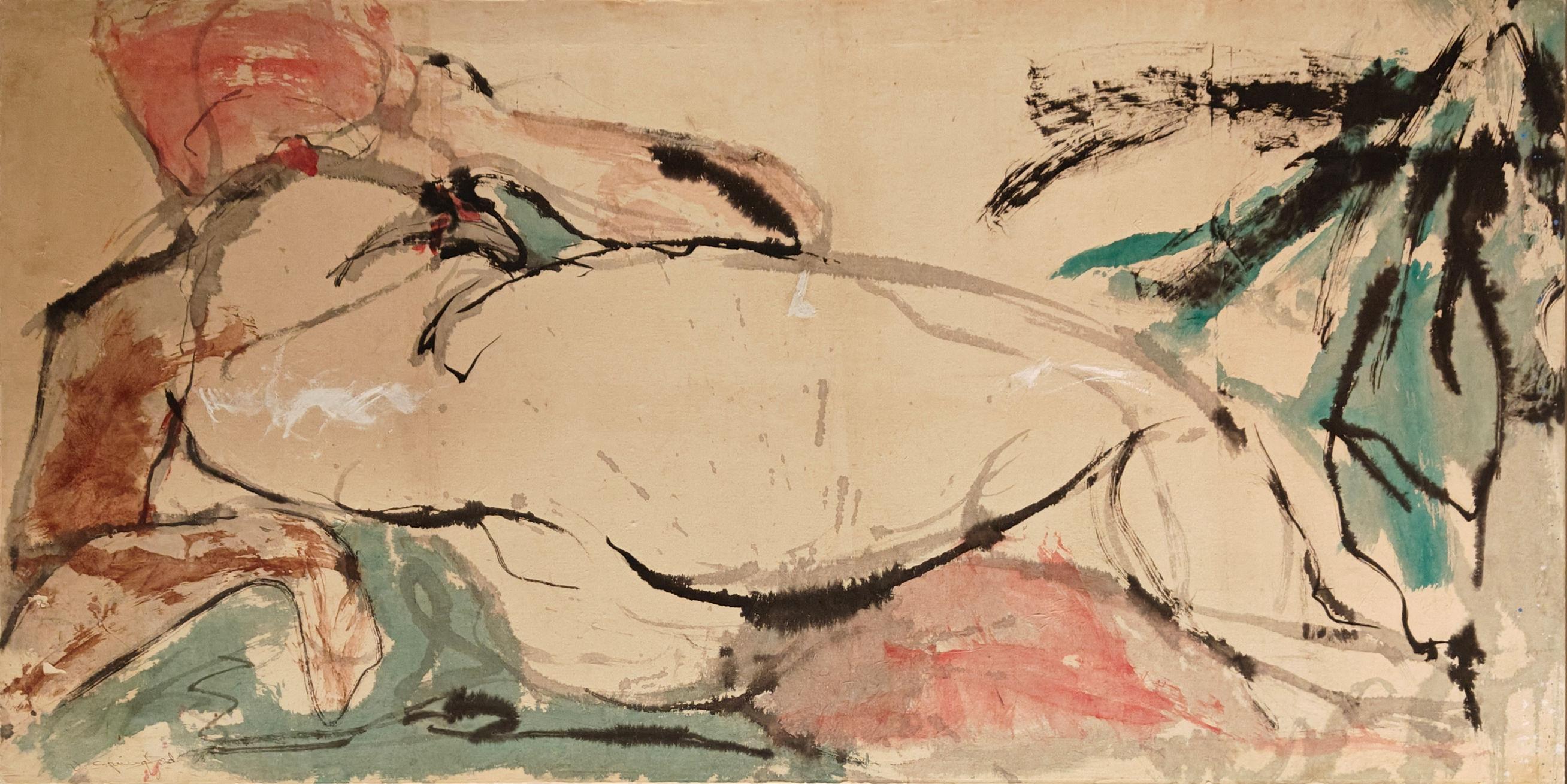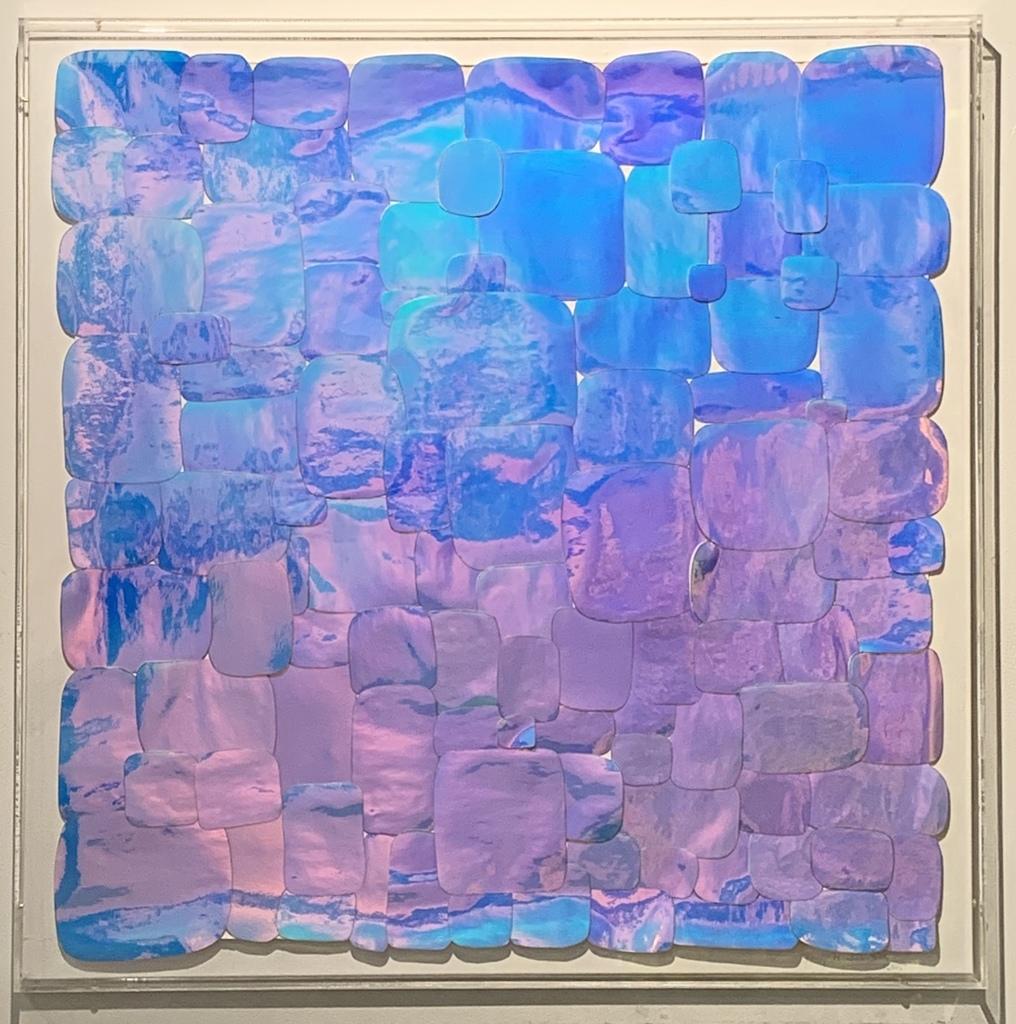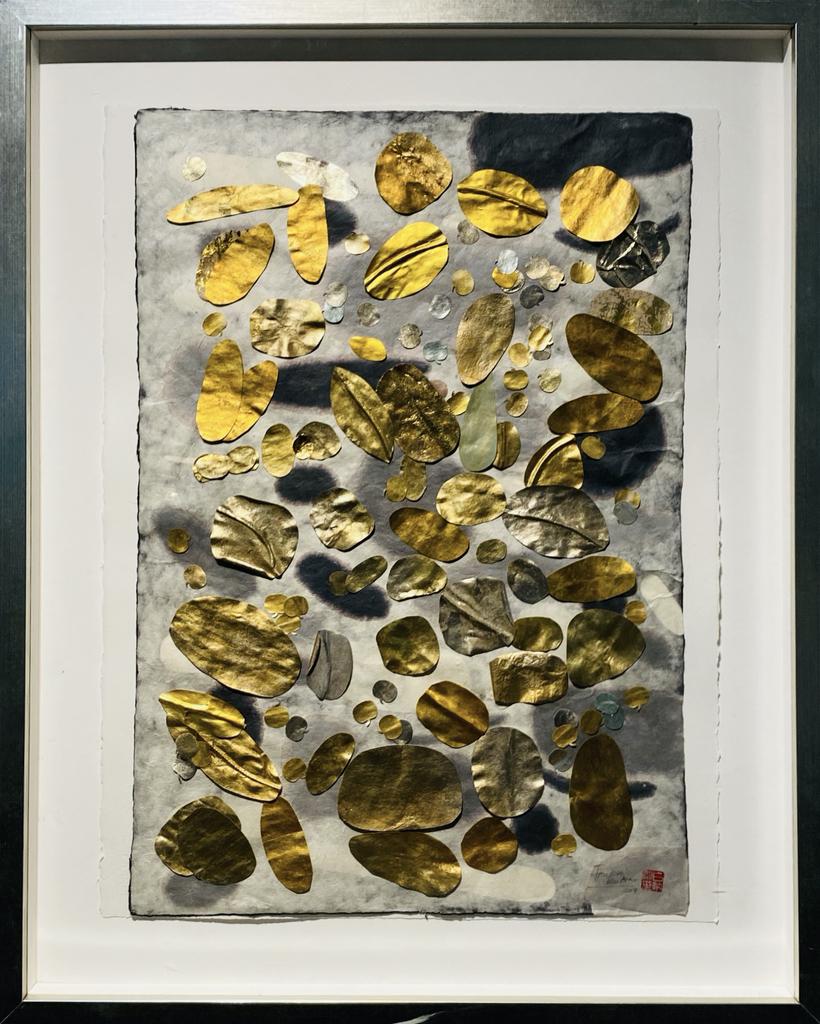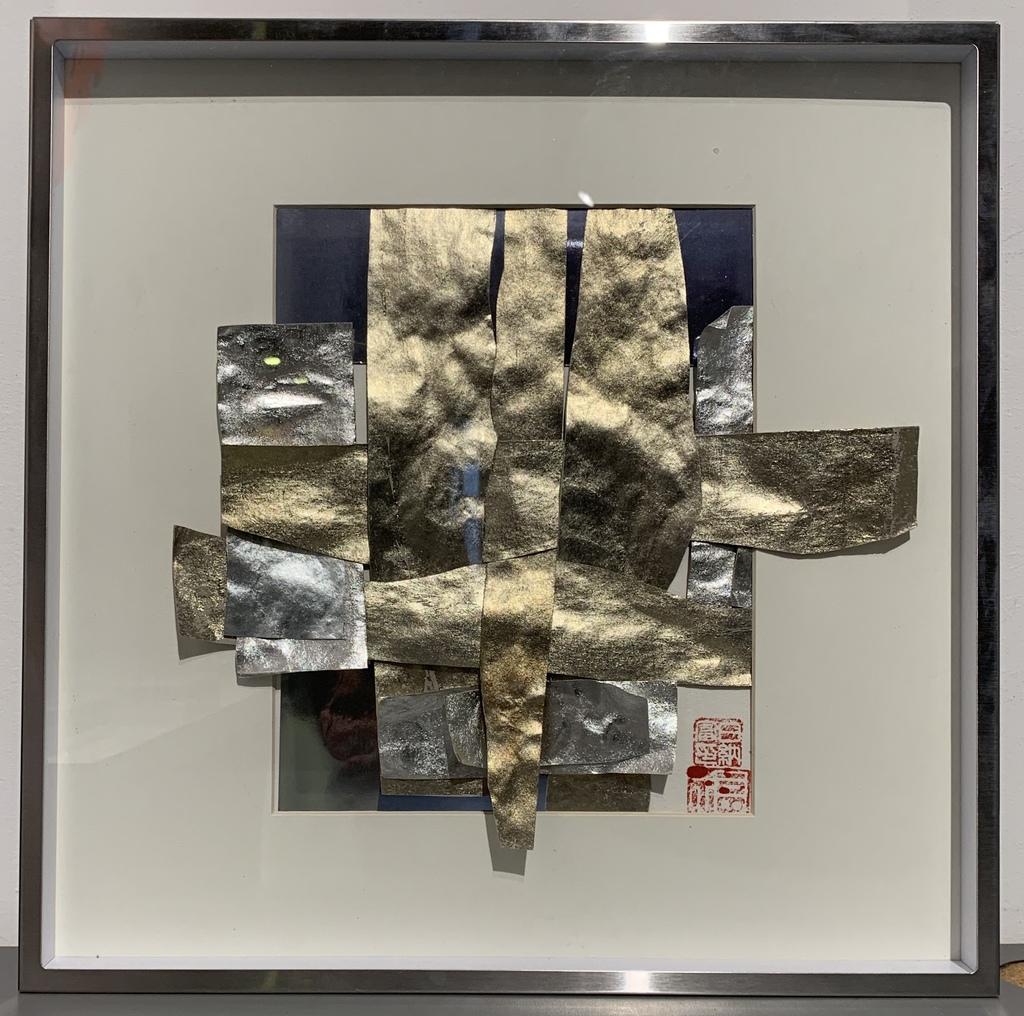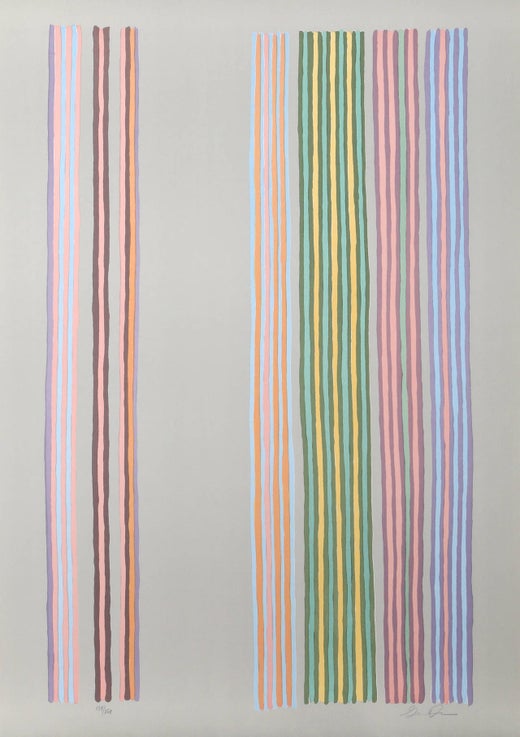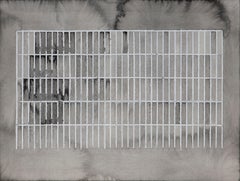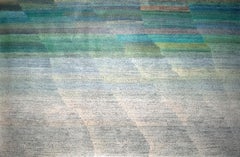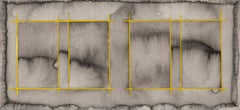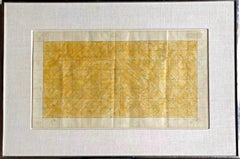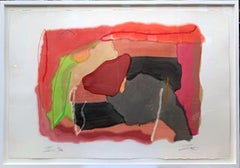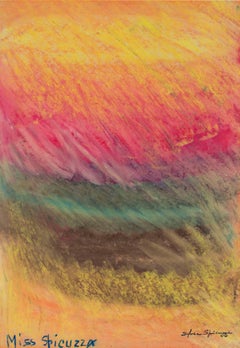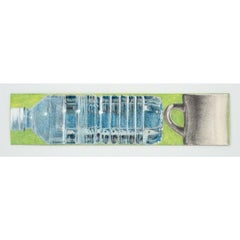
Gene Davis Original Drawing
View Similar Items
Want more images or videos?
Request additional images or videos from the seller
1 of 8
Gene DavisGene Davis Original Drawing1970s
1970s
Price:$2,400
$2,750List Price
About the Item
- Creator:Gene Davis (1920-1985, American)
- Creation Year:1970s
- Dimensions:Height: 17.5 in (44.45 cm)Width: 21.5 in (54.61 cm)Depth: 1 in (2.54 cm)
- Medium:
- Movement & Style:
- Period:
- Condition:
- Gallery Location:Washington, DC
- Reference Number:1stDibs: LU133727078652
Gene Davis
Davis was born in Washington D.C. in 1920 and spent nearly all his life there. Before he began to paint in 1949, he worked as a sportswriter, covering the Washington Football Team and other local teams. Working as a journalist in the late 1940s, he covered the Roosevelt and Truman presidential administrations, and was often President Truman's partner for poker games. His first art studio was in his apartment on Scott Circle; later he worked out of a studio on Pennsylvania Avenue. Davis's first solo exhibition of drawings was at the Dupont Theater Gallery in 1952, and his first exhibition of paintings was at Catholic University in 1953. A decade later he participated in the "Washington Color Painters" exhibit at the Washington Gallery of Modern Art in Washington, DC, which traveled to other venues around the US, and launched the recognition of the Washington Color School as a regional movement in which Davis was a central figure. The Washington painters were among the most prominent of the mid-century color field painters. Though, he worked in a variety of media and styles, including ink, oil, acrylic, video, and collage, Davis is best known by far for his acrylic paintings (mostly on canvas) of colorful vertical stripes, which he began to paint in 1958. The paintings typically repeat particular colors to create a sense of rhythm and repetition with variations. One of the best-known of his paintings, "Black Grey Beat" (1964), owned by the Smithsonian American Art Museum reinforces these musical comparisons in its title. The pairs of alternating black and grey stripes are repeated across the canvas, and recognizable even as other colors are substituted for black and grey, and returned to even as the repetition of dark and light pairs is here and there broken by sharply contrasting colors. In 1972 Davis created Franklin's Footpath, which was at the time the world's largest artwork, by painting colorful stripes on the street in front of the Philadelphia Museum of Art, and the world's largest painting, Niagara (43,680 square feet), in a parking lot in Lewiston, NY. His "micro-paintings", at the other extreme, were as small as 3/8 of an inch square. For a public work in a different medium altogether, he designed the color patterns of the "Solar Wall," a set of tubes filled with dyed water and backlit by fluorescent lights, at the Muscarelle Museum of Art at the College of William and Mary in Williamsburg, Virginia. Davis began teaching in 1966 at the Corcoran School of Art, where he became a permanent member of the faculty. His works are in the collections of, among others, the Corcoran Gallery of Art, the Solomon R. Guggenheim Museum, The Phillips Collection in Washington, DC, the Walker Art Center in Minneapolis, MN, The Governor Nelson A. Rockefeller Empire State Plaza Art Collection in Albany, NY, and the Smithsonian American Art Museum. He died on April 6, 1985 in Washington, DC.
About the Seller
5.0
Vetted Professional Seller
Every seller passes strict standards for authenticity and reliability
1stDibs seller since 2020
45 sales on 1stDibs
Authenticity Guarantee
In the unlikely event there’s an issue with an item’s authenticity, contact us within 1 year for a full refund. DetailsMoney-Back Guarantee
If your item is not as described, is damaged in transit, or does not arrive, contact us within 7 days for a full refund. Details24-Hour Cancellation
You have a 24-hour grace period in which to reconsider your purchase, with no questions asked.Vetted Professional Sellers
Our world-class sellers must adhere to strict standards for service and quality, maintaining the integrity of our listings.Price-Match Guarantee
If you find that a seller listed the same item for a lower price elsewhere, we’ll match it.Trusted Global Delivery
Our best-in-class carrier network provides specialized shipping options worldwide, including custom delivery.More From This Seller
View AllUntitled (Līnea Study), 2022
Located in Washington, DC
Original work by Mary Early. Graphite, wax crayon, and sumi ink on Arches paper, 12.25 x 16".
"The production, or “pouring,” of beeswax elements has become a meditative process that is integral to my art practice, serving as an observation of time, materials, and space. The raw beeswax I use has taken its form at the end of a long series of natural processes followed by a manufacturing process, and once it is in my hands, the studio becomes a factory. I apply my own methods of transforming the material by casting the beeswax into three-dimensional forms. Once I have fixed both a place and a time in the future for a potential installation, I begin to determine how the beeswax lines will take their aggregated shape in that space and, simultaneously, how many lines might be manufactured for that particular space in the amount of time available."
Mary Early (born 1975, Washington, DC) lives and works in Washington, DC. She studied visual art, film, and video at Bennington College, and her work has been exhibited at the United States Botanic Garden, Washington Project for the Arts, the Corcoran Gallery of Art, Second Street Gallery (Charlottesville, VA), Hemphill Fine Arts (Washington DC,) the Austrian Cultural Forum (Washington DC), Galerie Im Ersten (Vienna, Austria), Kloster Schloss Salem (Salem, Germany), Kunstlerbund Tubingen (Tubingen, Germany), and the American University Museum (Washington DC) among other regional and national galleries.
Her early work incorporated formed concrete, tarpaper and paraffin wax, fabricated wood structures, and, increasingly over the years, surfaces coated with wax as a method of preserving or concealing an object within. Recent works have relied solely on solid forms cast in wax, abandoning the use of any permanent armature. Temporary installations are guided by schematic drawings and plans, which then serve as a permanent record.
In 2014 she exhibited her first large-scale installation of wax lines at Second Street Gallery in Charlottesville, VA, followed by temporary installations in response to various historical sites in Salem, Germany (2016) and Tubingen Germany (2017). In 2017 she participated in the exhibition “Twist-Layer-Pour” at the American University Museum, which included Untitled [Curve], an installation of thousands of beeswax lines assembled on the floor of the museum. In spring 2018 she was commissioned to create a temporary installation at the Sun Valley Center for the Arts, Sun Valley Idaho. This work took the form of two intersecting curtains of hanging beeswax lines bisecting a 12’ foot x 18’ foot room, providing an immersive and enclosed viewing space.
Early’s work is included in the collections of the US Department of State/Embassy of Panama, Kimpton Hotels, and the District of Columbia Art Bank among other public and private collections. She is a recipient of the Artist Fellowship Grant from the DC Commission on Arts & Humanities, Washington DC (2020, 2019, 2018, 2017, 2016, 2015, 2014, 2011, 2009, 2007).
Early is the director of HEMPHILL Fine Arts, Washington, DC, and serves on the boards of Hamiltonian Artists and Washington Sculptors Group. She handles the work of contemporary artists and artist estates, including the work of William Christenberry, Colby Caldwell, Hedieh Javanshir Ilchi, Linling Lu, Mingering Mike, Robin Rose, Renée Stout...
Category
21st Century and Contemporary Abstract Geometric Mixed Media
Materials
Wax Crayon, Sumi Ink, Archival Paper, Graphite
Willem de Looper
By Willem de Looper
Located in Washington, DC
Watercolor by Willem De Looper (1932-2009). Painting is signed "de Looper" and dated 76' lower right. Painting measures 20" x 8".
Willem De Looper was a Washington D.C. abstract...
Category
1970s Color-Field Abstract Paintings
Materials
Paper, Watercolor
$2,925 Sale Price
35% Off
Christian Gardair Monumental Painting "Oceano Graphie", 1983
Located in Washington, DC
Exceptional and large painting by French artist Christian Gardair (French, b.1938). Painting is acrylic on polyester paper. Signed and titled "Oceano Graphie" dated 1983. Painting me...
Category
1980s Color-Field Abstract Paintings
Materials
Acrylic, Synthetic Paper
$7,250 Sale Price
50% Off
Untitled (Study for Līnea), 2021
Located in Washington, DC
Poured beeswax work by Mary Early from her "Study for Līnea" series.
"The production, or “pouring,” of beeswax elements has become a meditative process that is integral to my art practice, serving as an observation of time, materials, and space. The raw beeswax I use has taken its form at the end of a long series of natural processes followed by a manufacturing process, and once it is in my hands, the studio becomes a factory. I apply my own methods of transforming the material by casting the beeswax into three-dimensional forms. Once I have fixed both a place and a time in the future for a potential installation, I begin to determine how the beeswax lines will take their aggregated shape in that space and, simultaneously, how many lines might be manufactured for that particular space in the amount of time available."
Mary Early (born 1975, Washington, DC) lives and works in Washington, DC. She studied visual art, film, and video at Bennington College, and her work has been exhibited at the United States Botanic Garden, Washington Project for the Arts, the Corcoran Gallery of Art, Second Street Gallery (Charlottesville, VA), Hemphill Fine Arts (Washington DC,) the Austrian Cultural Forum (Washington DC), Galerie Im Ersten (Vienna, Austria), Kloster Schloss Salem (Salem, Germany), Kunstlerbund Tubingen (Tubingen, Germany), and the American University Museum (Washington DC) among other regional and national galleries.
Her early work incorporated formed concrete, tarpaper and paraffin wax, fabricated wood structures, and, increasingly over the years, surfaces coated with wax as a method of preserving or concealing an object within. Recent works have relied solely on solid forms cast in wax, abandoning the use of any permanent armature. Temporary installations are guided by schematic drawings and plans, which then serve as a permanent record.
In 2014 she exhibited her first large-scale installation of wax lines at Second Street Gallery in Charlottesville, VA, followed by temporary installations in response to various historical sites in Salem, Germany (2016) and Tubingen Germany (2017). In 2017 she participated in the exhibition “Twist-Layer-Pour” at the American University Museum, which included Untitled [Curve], an installation of thousands of beeswax lines assembled on the floor of the museum. In spring 2018 she was commissioned to create a temporary installation at the Sun Valley Center for the Arts, Sun Valley Idaho. This work took the form of two intersecting curtains of hanging beeswax lines bisecting a 12’ foot x 18’ foot room, providing an immersive and enclosed viewing space.
Early’s work is included in the collections of the US Department of State/Embassy of Panama, Kimpton Hotels, and the District of Columbia Art Bank among other public and private collections. She is a recipient of the Artist Fellowship Grant from the DC Commission on Arts & Humanities, Washington DC (2020, 2019, 2018, 2017, 2016, 2015, 2014, 2011, 2009, 2007).
Early is the director of HEMPHILL Fine Arts, Washington, DC, and serves on the boards of Hamiltonian Artists and Washington Sculptors Group. She handles the work of contemporary artists and artist estates, including the work of William Christenberry, Colby Caldwell, Hedieh Javanshir Ilchi, Linling Lu, Mingering Mike, Robin Rose, Renée Stout...
Category
21st Century and Contemporary Abstract Geometric Abstract Paintings
Materials
Wax Crayon, Sumi Ink, Archival Paper, Graphite
Abstract Beeswax Line Painting Untitled (Study for Līnea)
Located in Washington, DC
Poured beeswax work by Mary Early from her "Study for Līnea" series.
"The production, or “pouring,” of beeswax elements has become a meditative process that is integral to my art practice, serving as an observation of time, materials, and space. The raw beeswax I use has taken its form at the end of a long series of natural processes followed by a manufacturing process, and once it is in my hands, the studio becomes a factory. I apply my own methods of transforming the material by casting the beeswax into three-dimensional forms. Once I have fixed both a place and a time in the future for a potential installation, I begin to determine how the beeswax lines will take their aggregated shape in that space and, simultaneously, how many lines might be manufactured for that particular space in the amount of time available."
Mary Early (born 1975, Washington, DC) lives and works in Washington, DC. She studied visual art, film, and video at Bennington College, and her work has been exhibited at the United States Botanic Garden, Washington Project for the Arts, the Corcoran Gallery of Art, Second Street Gallery (Charlottesville, VA), Hemphill Fine Arts (Washington DC,) the Austrian Cultural Forum (Washington DC), Galerie Im Ersten (Vienna, Austria), Kloster Schloss Salem (Salem, Germany), Kunstlerbund Tubingen (Tubingen, Germany), and the American University Museum (Washington DC) among other regional and national galleries.
Her early work incorporated formed concrete, tarpaper and paraffin wax, fabricated wood structures, and, increasingly over the years, surfaces coated with wax as a method of preserving or concealing an object within. Recent works have relied solely on solid forms cast in wax, abandoning the use of any permanent armature. Temporary installations are guided by schematic drawings and plans, which then serve as a permanent record.
In 2014 she exhibited her first large-scale installation of wax lines at Second Street Gallery in Charlottesville, VA, followed by temporary installations in response to various historical sites in Salem, Germany (2016) and Tubingen Germany (2017). In 2017 she participated in the exhibition “Twist-Layer-Pour” at the American University Museum, which included Untitled [Curve], an installation of thousands of beeswax lines assembled on the floor of the museum. In spring 2018 she was commissioned to create a temporary installation at the Sun Valley Center for the Arts, Sun Valley Idaho. This work took the form of two intersecting curtains of hanging beeswax lines bisecting a 12’ foot x 18’ foot room, providing an immersive and enclosed viewing space.
Early’s work is included in the collections of the US Department of State/Embassy of Panama, Kimpton Hotels, and the District of Columbia Art Bank among other public and private collections. She is a recipient of the Artist Fellowship Grant from the DC Commission on Arts & Humanities, Washington DC (2020, 2019, 2018, 2017, 2016, 2015, 2014, 2011, 2009, 2007).
Early is the director of HEMPHILL Fine Arts, Washington, DC, and serves on the boards of Hamiltonian Artists and Washington Sculptors Group. She handles the work of contemporary artists and artist estates, including the work of William Christenberry, Colby Caldwell, Hedieh Javanshir Ilchi, Linling Lu, Mingering Mike, Robin Rose, Renée Stout...
Category
21st Century and Contemporary Abstract Geometric Abstract Paintings
Materials
Wax Crayon, Sumi Ink, Archival Paper, Graphite
Untitled (Study for Līnea)
Located in Washington, DC
Poured beeswax work by Mary Early from her "Study for Līnea" series.
"The production, or “pouring,” of beeswax elements has become a meditative process that is integral to my art practice, serving as an observation of time, materials, and space. The raw beeswax I use has taken its form at the end of a long series of natural processes followed by a manufacturing process, and once it is in my hands, the studio becomes a factory. I apply my own methods of transforming the material by casting the beeswax into three-dimensional forms. Once I have fixed both a place and a time in the future for a potential installation, I begin to determine how the beeswax lines will take their aggregated shape in that space and, simultaneously, how many lines might be manufactured for that particular space in the amount of time available."
Mary Early (born 1975, Washington, DC) lives and works in Washington, DC. She studied visual art, film, and video at Bennington College, and her work has been exhibited at the United States Botanic Garden, Washington Project for the Arts, the Corcoran Gallery of Art, Second Street Gallery (Charlottesville, VA), Hemphill Fine Arts (Washington DC,) the Austrian Cultural Forum (Washington DC), Galerie Im Ersten (Vienna, Austria), Kloster Schloss Salem (Salem, Germany), Kunstlerbund Tubingen (Tubingen, Germany), and the American University Museum (Washington DC) among other regional and national galleries.
Her early work incorporated formed concrete, tarpaper and paraffin wax, fabricated wood structures, and, increasingly over the years, surfaces coated with wax as a method of preserving or concealing an object within. Recent works have relied solely on solid forms cast in wax, abandoning the use of any permanent armature. Temporary installations are guided by schematic drawings and plans, which then serve as a permanent record.
In 2014 she exhibited her first large-scale installation of wax lines at Second Street Gallery in Charlottesville, VA, followed by temporary installations in response to various historical sites in Salem, Germany (2016) and Tubingen Germany (2017). In 2017 she participated in the exhibition “Twist-Layer-Pour” at the American University Museum, which included Untitled [Curve], an installation of thousands of beeswax lines assembled on the floor of the museum. In spring 2018 she was commissioned to create a temporary installation at the Sun Valley Center for the Arts, Sun Valley Idaho. This work took the form of two intersecting curtains of hanging beeswax lines bisecting a 12’ foot x 18’ foot room, providing an immersive and enclosed viewing space.
Early’s work is included in the collections of the US Department of State/Embassy of Panama, Kimpton Hotels, and the District of Columbia Art Bank among other public and private collections. She is a recipient of the Artist Fellowship Grant from the DC Commission on Arts & Humanities, Washington DC (2020, 2019, 2018, 2017, 2016, 2015, 2014, 2011, 2009, 2007).
Early is the director of HEMPHILL Fine Arts, Washington, DC, and serves on the boards of Hamiltonian Artists and Washington Sculptors Group. She handles the work of contemporary artists and artist estates, including the work of William Christenberry, Colby Caldwell, Hedieh Javanshir Ilchi, Linling Lu, Mingering Mike, Robin Rose, Renée Stout...
Category
21st Century and Contemporary Abstract Geometric Mixed Media
Materials
Wax Crayon, Sumi Ink, Archival Paper, Graphite
You May Also Like
Larry Poons, Midget Racer, unique Color Field Abstract Geometric drawing, signed
By Larry Poons
Located in New York, NY
Larry Poons
Midget Racer, 1963
Colored Pencil on Graph Paper
Signed, titled, and dated by the artist on the lower right front
Original frame with gallery label included
Provenance: H...
Category
1960s Color-Field Abstract Drawings and Watercolors
Materials
Mixed Media, Color Pencil
Dexter's Choice, State II, signed mixed media watercolor (unique variant) Framed
By Larry Zox
Located in New York, NY
Larry Zox
Dexter's Choice, State II, ca. 1990
Mixed media, Watercolor pochoir, and Oil stick Wax, Water-Based Crayons, on heavy Arches museum watercolor rag paper with deckled edges
40 × 60 in
101.6 × 152.4 cm
Edition 8/30 (unique variant)
Frame included
Measurements:
Sheet: 40 inches (vertical) by 60 inches (horizontal)
Frame: 42 inches x 62 inches x 1 inch
Dexter's Choice, State # II is a unique, mixed media work from an edition of 30 unique variants done in pochoir, (25 stencils, 14 colors). Here, Zox uses watercolor instead of inks, which is applied to heavy 300 lb. watercolor paper. Although it is a multiple signed and numbered from the edition of 30, each work of art is unique because of how the paper receives the watercolor brush. In addition, this work is created like a mixed media painting because it has 11 lines added by hand with wax and water based crayons and oil sticks. The unique watercolor technique that Zox employed in making "Dexter's Choice" is documented in the textbook, "Screen Printing: Water Based Techniques,Roni Henning, NYIT ".
Dexter's Choice was published by Images Gallery, and this work was acquired directly from the publisher before they sold out. This work is elegantly floated and framed in a white wood frame.
Accompanied by gallery issued Certificate of Guarantee
Larry Zox Biography:
A PAINTER who played an essential role in the Color Field discourse of the 1960s and 1970s, Larry Zox is best known for his intensely and brilliantly colored geometric abstractions that question and violate symmetry.1 Zox stated in 1965: “Being contrary is the only way I can get at anything.” To Zox, this position was not necessarily arbitrary, but instead meant “responding to something in an examination of it [such as] using
a mechanical format with X number of possibilities.”2 What he sought was to “get at the specific character and quality of each painting in and for itself,” as James Monte stated in his introductory essay in the catalogue for Zox’s 1973–1974 solo exhibition at the Whitney Museum of American Art.3 Zox’s robust paintings reveal
a celebrated artist and master of composition who is explored and challenged the possibilities of Post-Painterly Abstraction and Minimalist pictorial conventions.
Zox began to receive attention in the 1960s when he was included in several groundbreaking exhibitions of Color Field and Minimalist art, including Shape and Structure (1965), organized by Henry Geldzahler and Frank Stella for Tibor de Nagy, New York, and Systemic Painting (1966), organized by Lawrence Alloway for the Solomon R. Guggenheim Museum, New York. In 1973–1974, the Whitney’s solo exhibition of Zox’s work gave recognition to his significance in the art scene of the preceding decade. In the following year, he was represented in the inaugural exhibition of the Hirshhorn Museum and Sculpture Garden, Wahsington, DC, which acquired fourteen of his works.
Zox was born in Des Moines, Iowa in 1937. He attended the University of Oklahoma and Drake University, Des Moines, Iowa, and then studied under George Grosz at the Des Moines Art Center. In 1958, Zox moved to New York, joining the downtown art scene. His studio on 20th Street became a gathering place for artists, jazz musicians, bikers, and boxers, and he occasionally sparred with visiting fighters. He later established a studio in East Hampton, a former black smithy used previously by Jackson Pollock.
In his earliest works, such as Banner (1962) Zox created
collages consisting of pieces of painted paper stapled onto sheets of plywood. He then produced paintings that were illusions of collages, including both torn- and trued-edged forms, to which he added a wide range of strong hues that created ambiguous surfaces. In paintings such as For Jean (1963), he omitted the collage aspect of his work and applied flat color areas to create more complete statements of pure color and shape. He then replaced these torn and expressive edges with clean and impersonal lines that would define his work for the next decade.
From 1962 to 1965, he produced his Rotation series, at first creating plywood and Plexiglas reliefs, which turned squares into dynamic polygons. He used these shapes in his paintings as well, employing white as a foil between colors to produce negative spaces that suggest that the colored shapes had only been cut out and laid down instead of painted. The New York Times in 1964 wrote of the works in show such as Rotation B (1964) and of the artist: “The artist is hip, cool, adventurous, not content to stay with the mere exercise of sensibility that one sees in smaller works.”4
In 1965, he began the Scissor Jack series, in which he arranged opposing triangular shapes with inverted Vs of bare canvas at their centers that threaten to split their compositions apart. In several works from this series, Zox was inspired by ancient Chinese water vessels. With a mathematical precision and a poetic license, Zox flattened the three dimensional object onto graph paper, and later translated his interpretation of the vessel’s lines onto canvas with masking tape, forming the structure of the painting.
The Diamond Cut and Diamond Drill paintings...
Category
1990s Color-Field Abstract Drawings and Watercolors
Materials
Crayon, Oil, Watercolor, Monoprint, Mixed Media, Graphite
$6,000 Sale Price
20% Off
"Color Field (Chalk on Wet Paper)" original pastel by Sylvia Spicuzza
By Sylvia Spicuzza
Located in Milwaukee, WI
In this composition, Sylvia Spiczza works in the manner of color field artists like Mark Rothko and Helen Frankenthaler, presenting a gradation of colors shifting from yellow to red ...
Category
1960s Color-Field Abstract Drawings and Watercolors
Materials
Pastel
Mug and Bottle in Colored Pencil, Graphite, Pastel & Watercolor on Paper, 2021
Located in Orange, CA
Mug and Bottle, 2021
Additional information:
Medium: Colored pencil, gouache, graphite, pastel, and watercolor on paper
Dimensions: 13 3/4 x 26 1/8 in
Todd Hebert (b. 1972 in Valle...
Category
21st Century and Contemporary Abstract Drawings and Watercolors
Materials
Gouache, Color Pencil, Paper, Pastel, Watercolor, Graphite
Hors Cadre I (Abstract painting)
Located in London, GB
Hors Cadre I (Abstract painting)
Watercolor, color pencil and oil pastel on paper — Unframed
Marie de Lignerolles is an artist, designer, illustr...
Category
2010s Abstract Abstract Paintings
Materials
Paper, Oil Pastel, Watercolor, Color Pencil
"Untitled" Vivian Springford, 1960s Color Field Abstract Expressionist Forms
Located in New York, NY
Vivian Springford
Untitled (Rice Paper Mounting), 1963-65
Signed lower left
Ink, watercolor and acrylic on rice paper laid to canvas
27 1/4 x 53 3/8 inches
A contributor to Abstrac...
Category
1960s Color-Field Abstract Paintings
Materials
Canvas, Ink, Watercolor, Rice Paper
